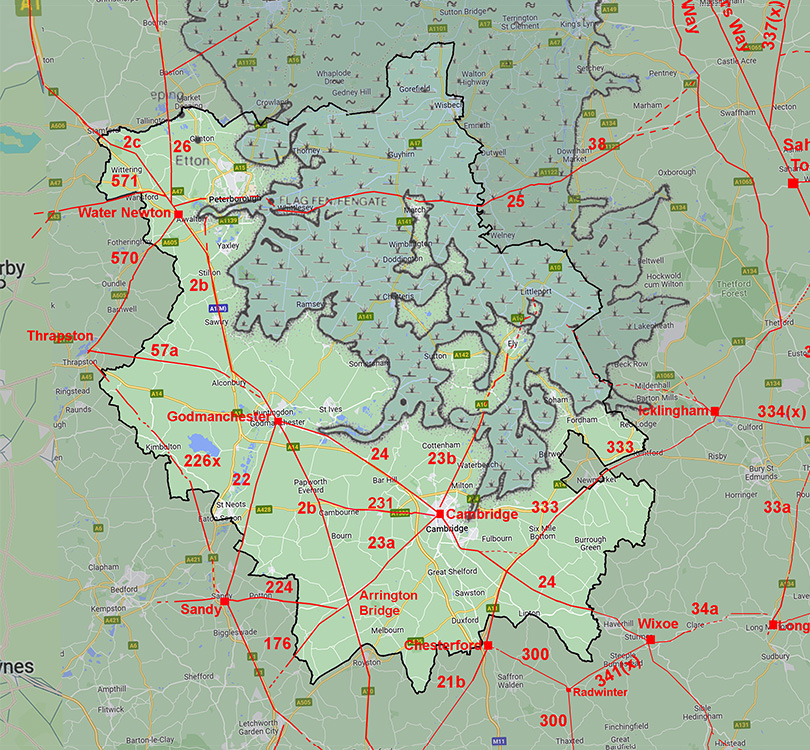Lidar Image - Route from Braughing to Arrington Bridge
The route initially follows the River Rib valley passing through Buntingford but then turns off towards Royston where another change of direction occurred, this time towards Arrington Bridge |
|
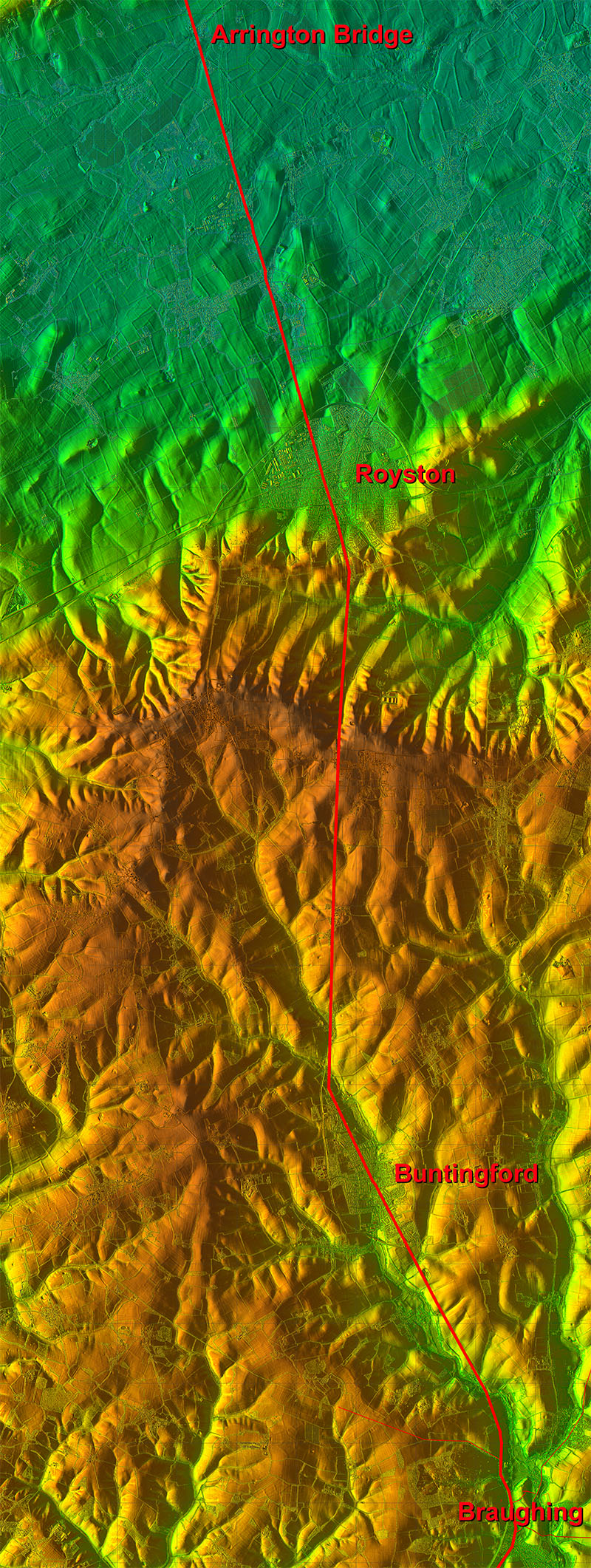 |
Oblique 3D Lidar Image - Braughing to Arrington Bridge
The Rib valley route is obvious in this oblique view. If it had followed the valley further north then a higher crossing of the hills would have resulted. So a good compromise between directness and climbing. |
Click for larger view |
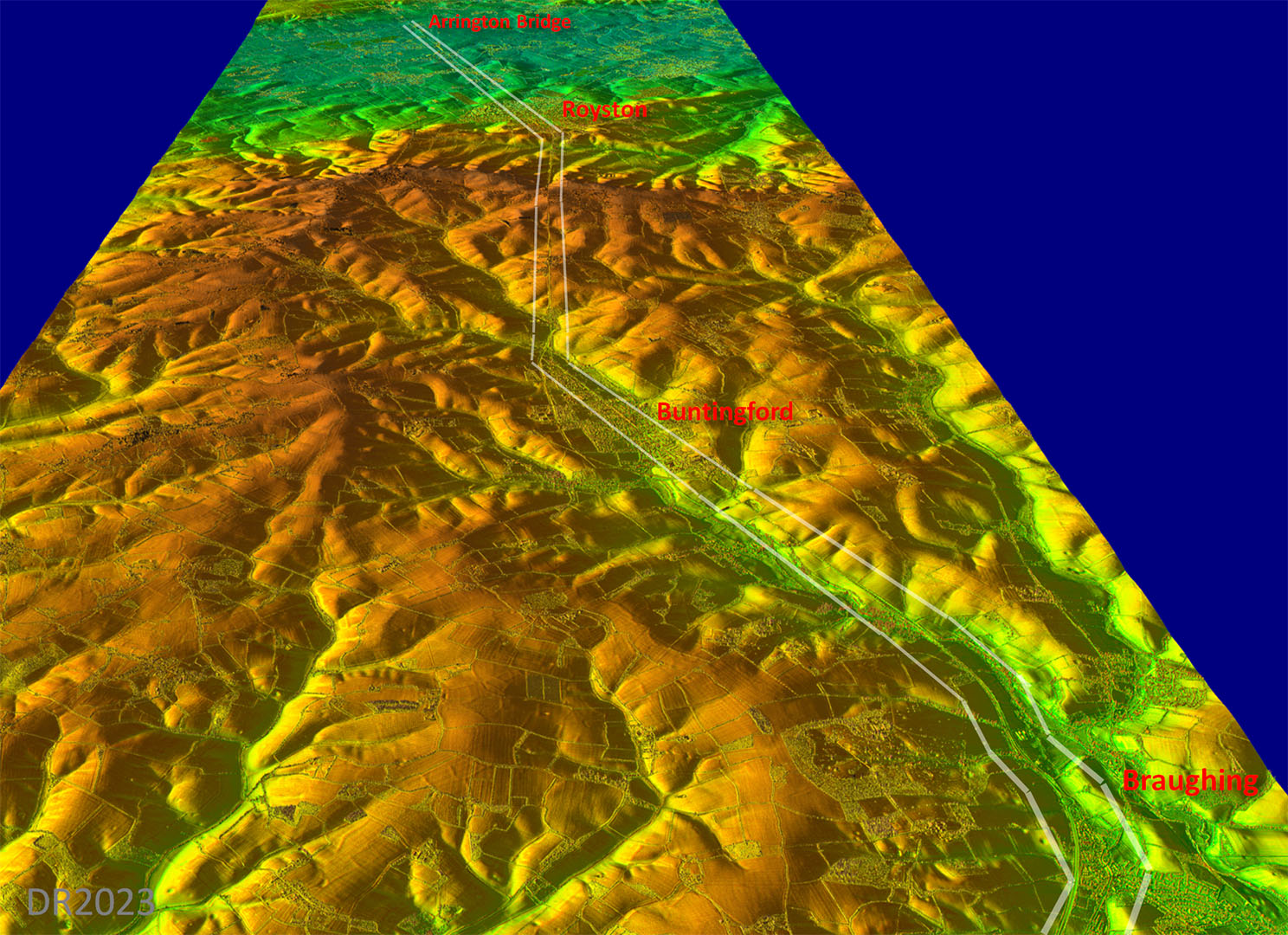 |
High Street, Puckeridge
As mentioned above, Ermine Street does not enter Braughing Parish but passes through the village of Puckeridge. There High Street indicates the approximate Roman route but the old Crown and Falcon pub, I would suggest, is most likely aligned with and alongside the original Roman alignment, so slightly angled to the modern road.. |
Click for larger view |
 |
Lidar Image and Route Map 1
Not a lot of Roman evidence as the A10 masks the Roman line. |
Click for larger view |
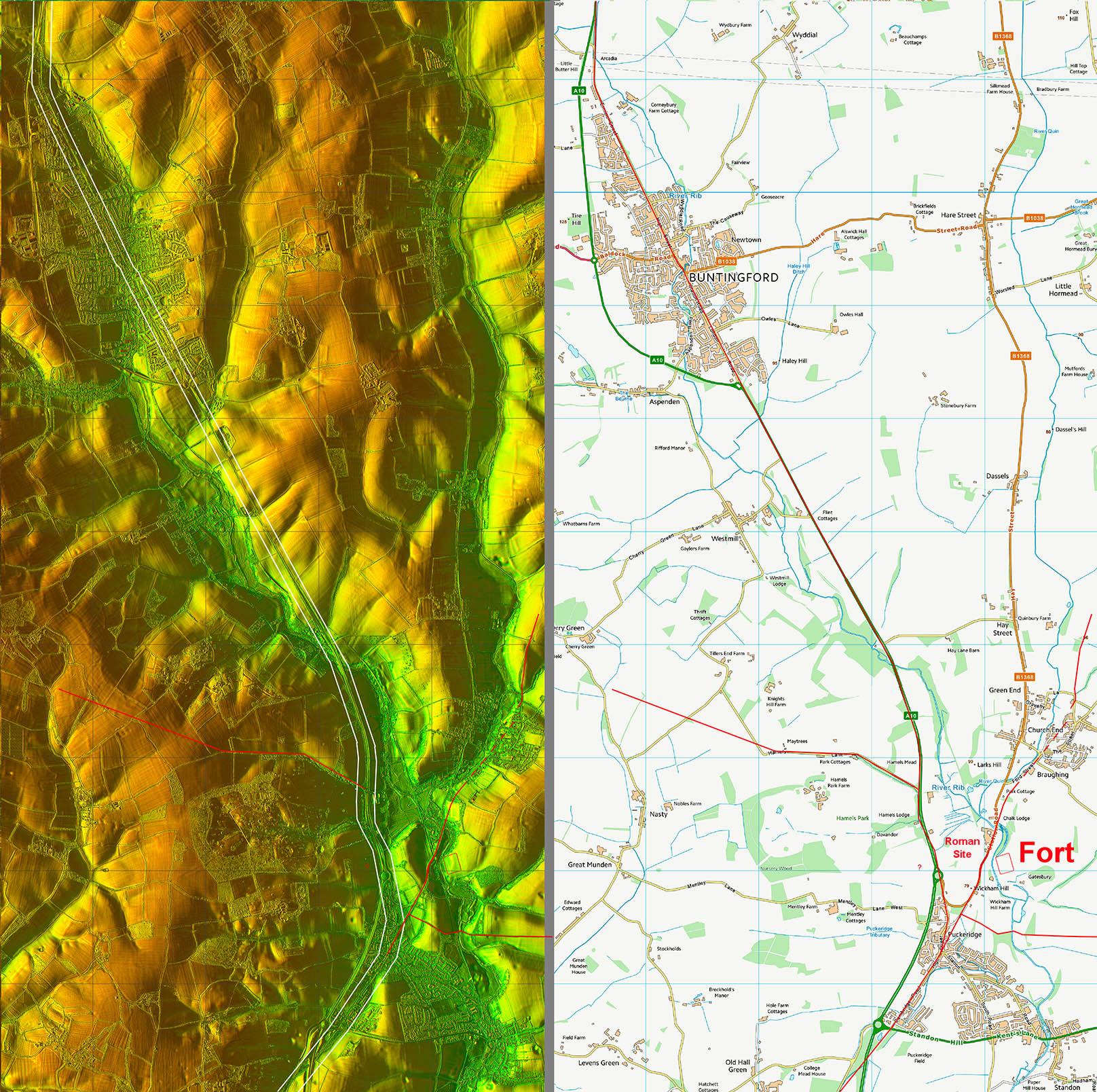 |
Ermine Street, Buntingford
Leaving Buntingford then the road retains the name Ermine Street. |
Click for larger view |
 |
Lidar Image and Route Map 2
Again the A10 covers up the Roman road. |
Click for larger view |
 |
Kneesworth Street, Royston
The pub name gives it away that this road continued in use long after the Romans had departed. Beyond Royston the road name changes to Old North Road - a very apt name being almost 2000 years old.
|
Click for larger view |
 |
Lidar Image and Route Map3
Virtually straight now all the way to the Roman settlement at Arrington Bridge. |
Click for larger view |
 |
Arrington Bridge
Arrington Bridge was an important road junction with roads from Cambridge, Sandy and Stotfold all met and shared a common bridge over the River Cam.
As well as being a cross-roads this site is halfway between Braughing and Godmanchester to a Roman site or staging post would be expected here. Just such a site along both sides of the A14 at Arrington Bridge has been known for some years. It was discovered and investigated by very limited trial trenching by Roland Parker in 1972, who interpreted the site as a posting station.This was later confirmed when the new roundabout was constructed revealing evidence for a roadside settlement.
Reference: Excavation of a Roman Site near W Cambs., 1989, Wendy Horton, Gavin Lucas & Gerald A. Wait, Cambridge Antiquarian Society.
|
Click for larger view |
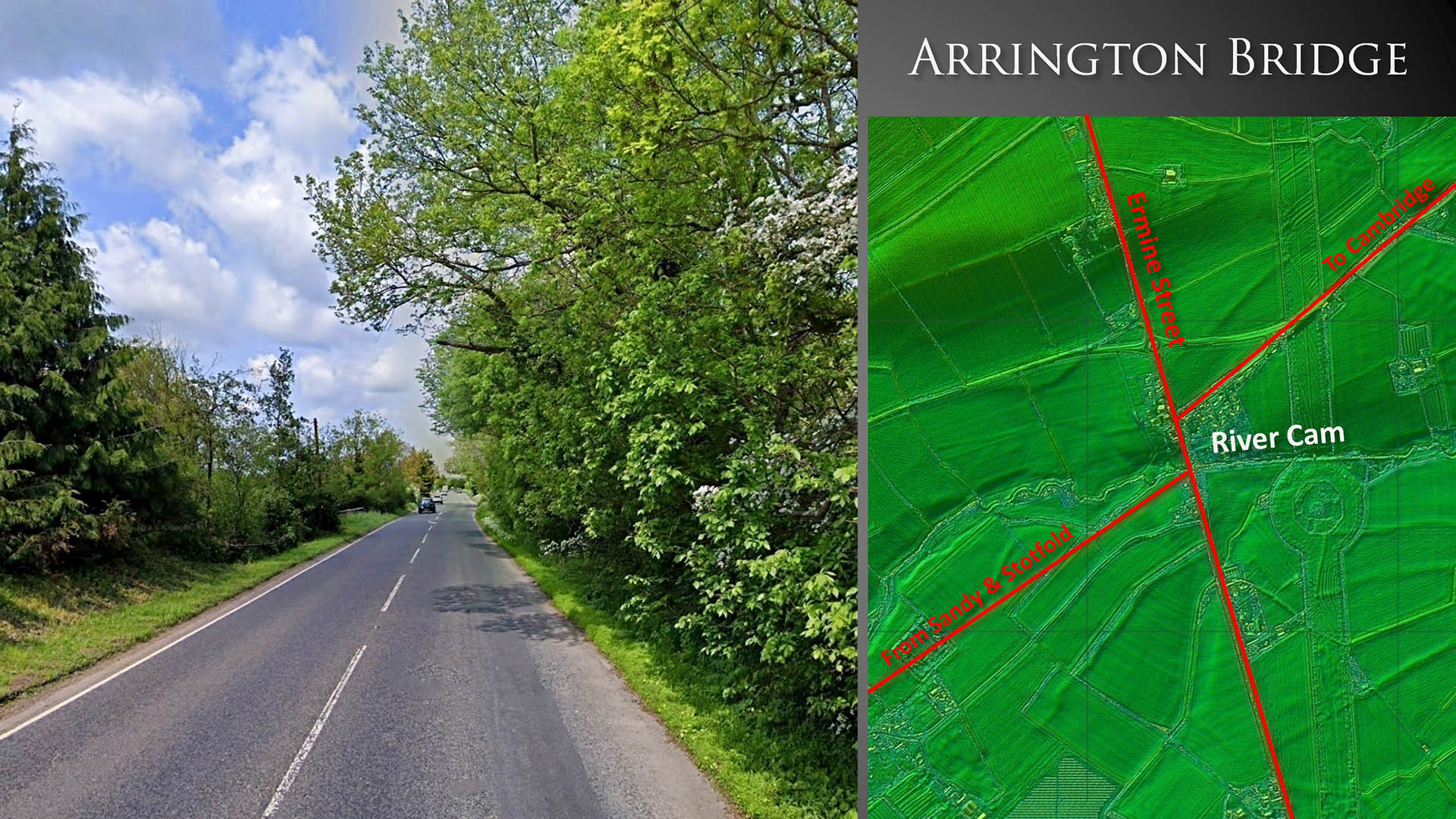 |

